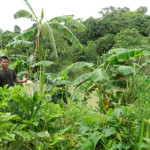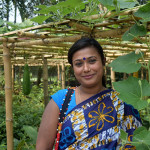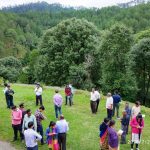Welthungerhilfe India, Nepal, Bangladesh
Key Facts
67%
of Indian Population live in rural areas (World Bank)58%
of rural population engages in agriculture and allied sectors (National Sample Survey Organisation)Nearly 90%
of workers are employed in the unorganized sector (National Sample Survey Organisation)In rural India, 70% of the population live and depend primarily on agriculture. 65% of India’s farmers, predominantly youth, belong to small and marginal category, who in cases of poor crop, flooding or drought are often forced to work as laborers in informal sectors. High external input dependent agronomy has further pushed them to the margins along with creating threat to agro biodiversity, environment and food safety. It has, to some extent, overlooked the agricultural anthropology, agricultural ethics and politics and its link with the food system.
Increased temperature, changes in frequency and intensity of rainfall, seasonal variations and unusual flooding, particularly in low-lying areas, also directly affect agriculture and other modes of production.
Our work
Welthungerhilfe promotes agroecology by establishing Sustainable Integrated Farming Systems (SIFS) with small and marginal farmers through various programmes and agroecology courses. Integrated farming is an agroecological approach, which tries to imitate nature’s principles, where not only crops but, varied types of plants, animals, bird, fish and other aquatic flora and fauna are utilized for production. Through these programmes, a range of processes are developed and standardised, such as
- Capacity building of farmers through Farmer Field School (FFS) on farm designing and technical skill
- Improving management practices through value addition in making farmer’s cooperative for processing, distribution and certification, and marketing of farm produce through Common Facility Centre (CFC)
- Community monitoring for tracking progress and further planning by the community themselves.
- Nutrition sensitive agriculture/farm planning.
Recognising that climate change also poses an imminent threat to development and growth and in particular to agriculture sector, which is a source of livelihood for millions in South Asia, Welthungerhilfe has developed an approach for Climate Smart Village that would enable targeted communities to adapt to the potential impacts of climate change. This also includes processes like
- Village Development and Adaptation Plan (VDAP) – a set of tools to identify challenges, needs, scope and resources and plan accordingly
- Agro-advisory mechanism based on weather prediction
The programmes have recorded increase in overall production, income and nutrition – both in terms of food and fodder with enhancement and diversification, both in terms of quantity and quality, incidence of risk is reduced. Cost of production also reduces, and self-sufficiency increases as the system becomes energy efficient. In the process, the farmers became innovative, self-reliant, analytic and technologically sound to assess their own resources, strengths and stresses.
Welthungerhilfe also develops larger partnership with academicians, relevant national NGOs, state institutions as well as important international players to upscale ideas and models on agroecology, climate smart and nutrition sensitive agriculture. Welthungerhilfe also conducts action-reflection based agroecology course for students and practitioners and part of global research on improving agriculture education.
Initiatives
-

Agroecological approach to improve farms and food systems
The Sustainable Integrated Farming Systems (SIFS) Programme supports farmer groups to transform their farms into more productive and sustainable systems.
Agriculture and Environment
-

Promoting Climate Smart Villages in Bangladesh
The programme aims to promote climate smart villages with improved food and nutrition security and strengthen capacities of communities for better disaster preparedness.
Agriculture and Environment
-

Action-Reflection based agroecology courses
A paradigm shift from a linear to a cyclical approach of learning is practiced focusing on an active action reflection-based pedagogy.
Agriculture and Environment




